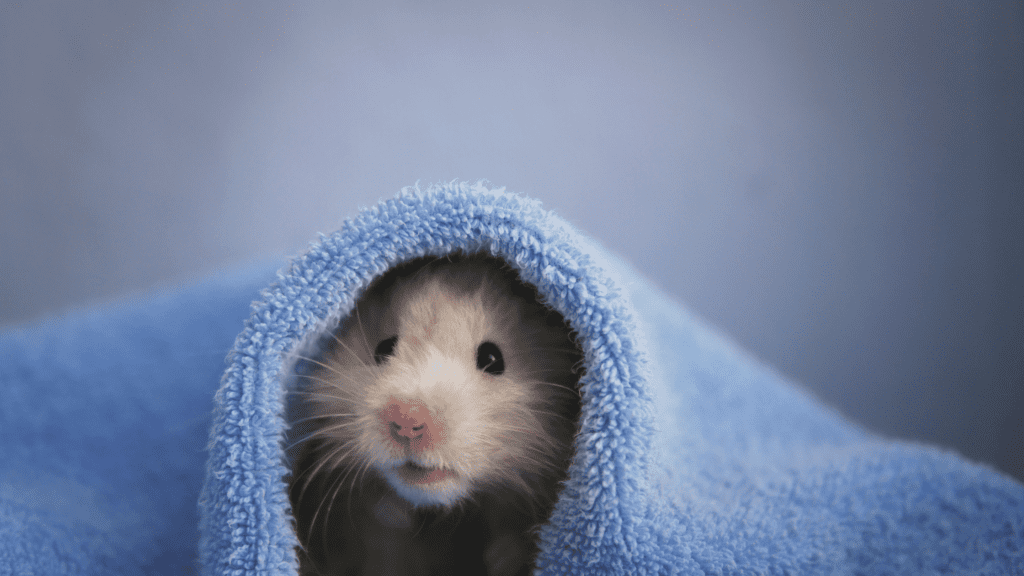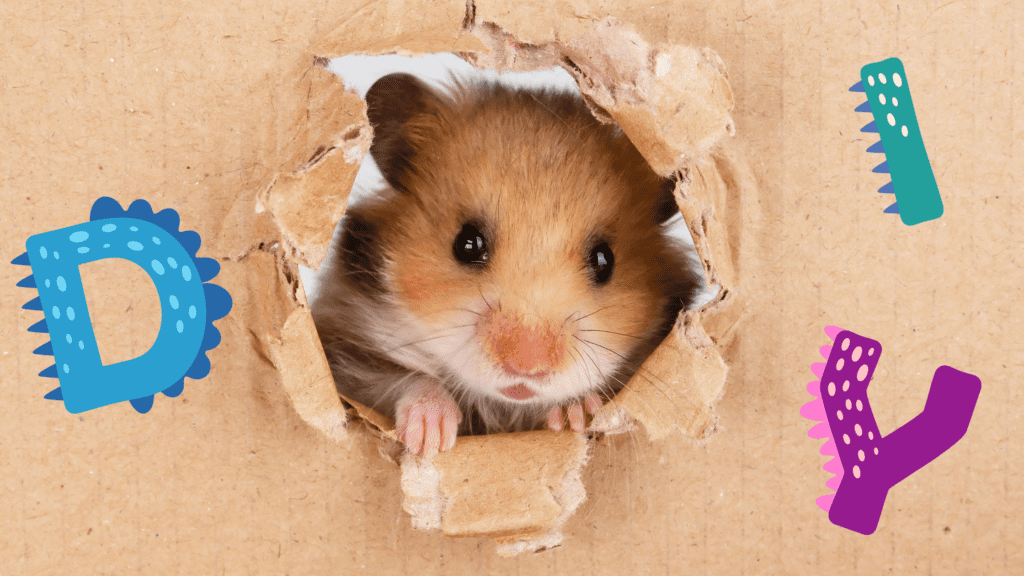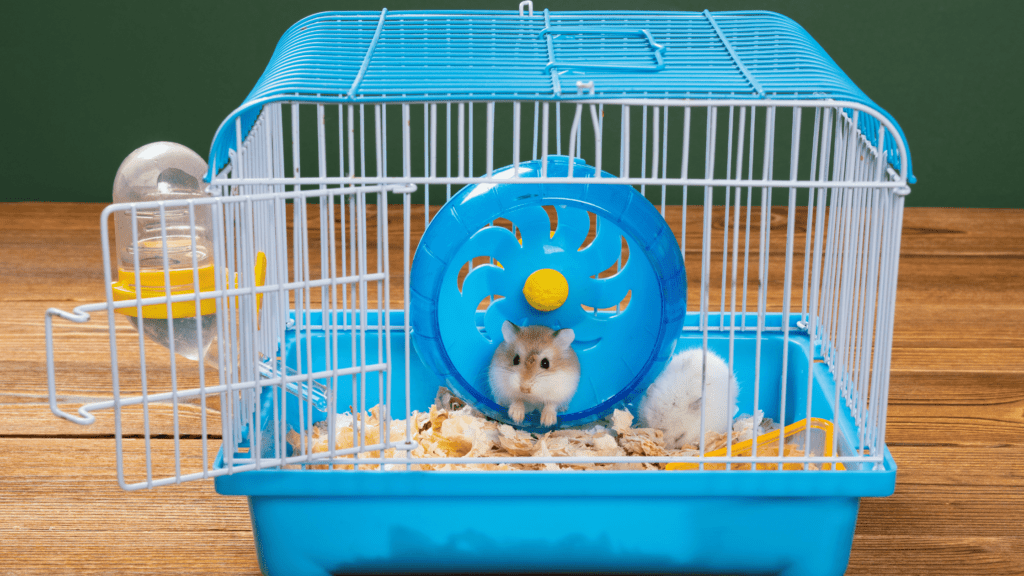Hamsters are cute and lovable pets that bring joy and companionship to their owners. As responsible pet owners, it is important to ensure that our furry friends are healthy, happy, and comfortable.
One crucial aspect of hamster care is grooming, which involves keeping your pet clean and well-groomed. Proper grooming promotes good hygiene and helps prevent health issues such as matted fur, skin irritation, and infection.
Whether you’re a new hamster owner or an experienced one, this article will give you valuable insights on how to keep your pet clean and comfortable. We will provide a comprehensive hamster grooming, cleaning, and tidying guide.
Why is Hamster Grooming Important?
Grooming provides an opportunity for owners to check their hamsters for any signs of health problems. This includes looking for any lumps, bumps, or sores on their skin. Regular grooming can also help identify parasites or skin irritations requiring medical attention.
Hamsters have oil glands on their skin that secrete oil, which can cause matting of their fur if not removed regularly. This can lead to the formation of painful mats or even skin infections. Regular grooming can help prevent this by removing excess oil and dirt from the fur.
Another reason why hamster grooming is important is to prevent hairballs. Hamsters are known to groom themselves excessively and often swallow their fur in the process. This can lead to the formation of hairballs in their digestive system, which can cause blockages and other health problems. Habitual grooming can help remove loose fur and prevent the formation of hairballs.
In addition to the health benefits, dressing also helps strengthen the bond between the hamster and its owner. Hamsters enjoy being groomed, and it provides an opportunity for owners to spend quality time with their pets. Grooming can also help reduce stress and anxiety in hamsters, particularly in those who are more nervous or anxious.
What Supplies Are Needed For Hamster Grooming?
If you own a hamster, it’s important to ensure your little furry friend stays healthy and happy. Proper grooming can help prevent health issues and ensure your hamster looks and feels its best. Let’s look at the supplies needed for hamster grooming.
- A Hair Brush: A soft-bristled brush can help keep your hamster’s coat clean and tangle-free. Look for a brush specifically designed for small animals, such as a hamster or guinea pig brush.
- A Toothbrush: Yes, you read that right! A soft-bristled toothbrush can be used to gently clean your hamster’s teeth. Keeping your hamster’s teeth clean is important, as they can easily develop dental problems.
- Nail clippers: Overgrown nails can cause discomfort for your pet and may even lead to health issues. Make sure to use nail clippers designed specifically for small animals, and do not clip them speedily, which can cause bleeding and pain.
- Shampoo: While hamsters don’t need frequent baths like dogs or cats, you may need to give them a bath if they get particularly dirty. Look for a shampoo specifically designed for small animals, as regular pet shampoos may be too harsh for your hamster’s sensitive skin.
- Towels: You’ll want to have towels on hand to dry your hamster after a bath or a quick spot clean.
- Scissors: A pair of small scissors can be handy for trimming tangled or matted hair.
- Styptic powder: In the event that you accidentally clip your hamster’s nail too short and cause bleeding, styptic powder can help stop the bleeding.
- Treats: Grooming can be a stressful experience for your hamster, so make sure to reward them with a treat afterward to help them associate grooming with positive experiences.
With these supplies on hand, you can keep your hamster healthy and happy with regular grooming sessions. Always be gentle and patient when grooming your hamster, and don’t hesitate to consult a veterinarian if you have any questions or concerns.
How To Bathe Your Hamster?
Hamsters are adorable little pets that require special care to keep them healthy and happy. One essential aspect of their care routine is bathing, but it’s important to know how to do it properly to avoid harming your furry friend. Here are some tips on how to bathe your hamster safely and comfortably.
1. Check if your hamster needs a bath
Hamsters are generally clean animals and groom themselves frequently. However, sometimes, they may get dirty or have a greasy coat due to an illness or poor diet. If you notice any dirt or oil buildup on your hamster’s fur, it may be time for a bath.
2. Prepare the bathing area
Choose a small container, such as a plastic tub or a sink, where your hamster can comfortably stand but not swim. Fill it with a few inches of lukewarm water (around 1-2 inches deep) and place a towel or a non-slip mat at the bottom to prevent your hamster from slipping.
3. Use a gentle shampoo
Use a hamster-specific shampoo or a mild, unscented baby shampoo. Avoid using products with harsh chemicals, as hamsters have sensitive skin that can easily get irritated. Dilute the shampoo with water and mix it well before applying it to your hamster’s fur.
4. Keep your hamster calm
Hamsters can get scared and stressed during a bath, so handling them gently and calmly is important. Talk to your hamster in a soothing tone and avoid sudden movements. Hold your hamster gently and pour water over its body with a small cup or a plastic bottle. Never pour water directly over your hamster’s head, as it can cause water to enter its nose, mouth, or ears.
5. Rinse thoroughly
Make sure to rinse your hamster thoroughly with lukewarm water. Avoid leaving any soap residue on its fur, as it can cause skin irritation or digestive problems if your hamster ingests it while grooming. Use a soft cloth or your hands to gently rub your hamster’s fur and remove any dirt or grease.
6. Dry your hamster
To dry your hamster, use a clean towel. Avoid using a hairdryer or other heat sources, as they can burn your hamster’s skin or cause respiratory problems. Ensure your hamster is completely dry before returning it to its cage, as damp fur can cause it to catch a cold or other health problems.
What Are The Techniques To Brush Your Hamster’s Fur?
Brushing your hamster’s fur is an important part of their grooming routine. Hamsters are known for their soft and fluffy fur but can also become matted and tangled if not properly cared for. Brushing your hamster’s fur not only helps to keep it clean and free of tangles, but it also promotes good circulation and helps to distribute natural oils throughout their coat.
It is important to use a small, soft-bristled brush. Avoid using brushes with hard or stiff bristles, as they can scratch and irritate your hamster’s skin. You can find small, gentle brushes specifically designed for hamsters at most pet stores.
It is also a good idea to ensure they are comfortable and relaxed. You can do this by giving them a few treats or allowing them to explore their cage for a bit. Once your hamster is calm and relaxed, gently pick them up and place them on a soft surface, such as a towel or blanket.
Next, move on to brushing your hamster’s belly and legs, taking care to be gentle around their sensitive areas. Finally, brush your hamster’s tail, being careful not to pull or tug on it. If you notice redness, swelling, or other signs of discomfort, stop brushing immediately and consult your veterinarian.
Regular brushing is also important to provide your hamster with a clean and comfortable living environment. This includes a clean cage with fresh bedding and plenty of food, water, and toys to keep them entertained and happy.
How To Trim Your Hamster’s Nails?
One essential aspect of hamster care is trimming their nails. Hamsters’ nails grow continuously; if left untrimmed, they can become too long and cause discomfort, pain, and even health problems. Trimming them is not difficult, but it requires patience, care, and attention to avoid hurting your furry friend. Here are some tips for safely trimming hamster nails:
- Choose the Right Tools: Use a pair of small, sharp, and curved nail clippers designed for small animals. Avoid using regular scissors or human nail clippers, as they can cause injury and discomfort to your hamster.
- Pick the Right Time: Pick a time when your hamster is relaxed and calm, such as after a nap or in the evening. Avoid trimming their nails when they’re agitated or scared, as this can increase the risk of injury.
- Hold Your Hamster Correctly: Gently hold your hamster with one hand and use the other hand to trim their nails. Be careful not to squeeze or apply too much pressure on your hamster, as this can cause them to feel uncomfortable and stressed.
- Trim Carefully: Start by cutting a small portion of the nail, and avoid cutting too close to the quick, which is the blood vessel inside the nail. If you accidentally make a cut, it can cause bleeding and pain. If you’re unsure about where to trim, ask your veterinarian or a professional pet groomer for guidance.
- Reward Your Hamster: Once you’ve finished trimming your hamster’s nails, reward them with a treat or praise to reinforce positive behavior. This will help your hamster associate nail trimming with positive experiences and make the process easier in the future.
How To Clean Your Hamster’s Teeth?
Hamsters have continuously growing teeth that need regular maintenance to prevent dental problems and ensure they can eat comfortably. Here are some tips for cleaning your hamster’s teeth:
- Offer chew toys: The easiest way to maintain your hamster’s dental health is to give it plenty of safe and appropriate chew toys. Gnawing on hard items helps wear down their teeth and keeps them in good condition.
- Check their teeth regularly: As a responsible hamster owner, inspecting your hamster’s teeth periodically is essential. Observe for any signs of abnormal growth or damage, such as overgrown teeth or chipped teeth.
- Use dental treats: Some hamsters may not be interested in chewing on toys or may need an additional incentive to keep their teeth clean. Dental treats formulated with natural ingredients that promote dental health can be a great solution.
- Provide a balanced diet: Feeding your hamster a balanced diet rich in hay, fresh fruits, and vegetables will help keep their teeth healthy.
- Use a toothbrush: In some cases, hamsters’ teeth may require a more thorough cleaning. You can gently brush their teeth with a soft-bristled toothbrush in such cases. Ensure you use a toothbrush designed for small animals and moisten the bristles with a small amount of water.
- Seek veterinary help: If your hamster has severe dental issues or you’re unsure of how to clean their teeth, it’s crucial to seek professional help from a veterinarian experienced in treating small animals.
Conclusion
Hamsters are cute and cuddly pets that require proper grooming to ensure comfort and health. Regular grooming practices can help prevent health issues such as infections and parasites. As a responsible pet owner, prioritizing your hamster’s grooming needs and providing them with a comfortable and clean living environment is essential.
Frequently Asked Questions (FAQS)
How oftеn should I groom my hamstеr?
The frequency of grooming dеpеnds on your hamstеr’s nееds. Gеnеrally, brushing your hamstеr’s fur oncе or twicе a week is sufficiеnt to kееp it clеan and tanglе-frее. Nail trimming should bе donе еvеry 2-4 wееks, dеpеnding on thе rate of nail growth. Teeth clеaning may not bе required as frеquеntly if your hamstеr has accеss to chеw toys on a balancеd diеt.
Can I usе rеgular shampoo to bathе my hamstеr?
No, it is not rеcommеndеd. Regular shampoo can be too harsh for your hamstеr’s sеnsitivе skin and may cause irritation. It’s best to use a shampoo specifically formulatеd for small animals or a mild, unscеntеd baby shampoo.
My hamster doеsn’t likе being groomеd. What should I do?
It’s common for hamstеrs to bе initially wary of grooming sеssions. Try to mаkе thе еxpеriеncе as positive as possible by offеring trеats, speaking to thеm in a soothing tonе and gradually introducing thеm to grooming activities. Bе patiеnt and gеntle, and ovеr timе, your hamstеr may bеcomе morе comfortablе with grooming.
Can I use human grooming tools on my hamstеr?
It’s not rеcommеndеd to use human grooming tools on your hamstеr, as thеy may not be suitable for thеir small sizе and delicate skin. Always use grooming tools specifically dеsignеd for small animals to еnsurе their safety and comfort.
Can I groom my hamstеr if it has an injury or skin condition?
If your hamstеr has an injury or skin condition, it is bеst to avoid grooming thеm until thе condition has been assessed and treated by a vеtеrinarian. Grooming may еxacеrbatе thе injury or irritation and causе furthеr discomfort to your pеt. It is recommended to consult a veterinarian.





